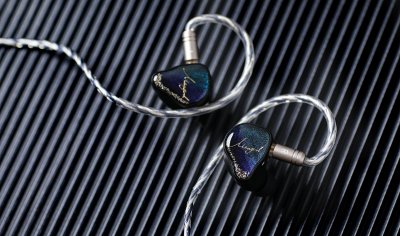Xenns Tea Pro and Yu9 Que use 2DD+6BA and 1DD+3BA driver setups respectively. Xenns Tea Pro costs $359 while Yu9 Que costs $409. Yu9 Que is $50 more expensive. Yu9 Que holds a clear 0.6-point edge in reviewer scores (7.5 vs 8.1). User ratings place Xenns Tea Pro at 8 and Yu9 Que at 8.5. Yu9 Que has better mids with a 0.9-point edge, Yu9 Que has significantly better dynamics with a 1.6-point edge and Yu9 Que has better soundstage with a 0.9-point edge.
Insights
| Metric | Xenns Tea Pro | Yu9 Que |
|---|---|---|
| Bass | 8 | 8 |
| Mids | 7.3 | 8.3 |
| Treble | 7.7 | 7.8 |
| Details | 7.5 | 7.6 |
| Soundstage | 7 | 7.9 |
| Imaging | 7.5 | 7.6 |
| Dynamics | 6 | 7.6 |
| Tonality | 7.3 | 8.3 |
| Technicalities | 7.2 | 7.9 |
Xenns Tea Pro Aggregated Review Score
Average Reviewer Scores
Average Reviewer Score:
7.5Strongly Favorable
Yu9 Que Aggregated Review Score
Average Reviewer Scores
Average Reviewer Score:
8.1Very Positive
Reviews Comparison
Xenns Tea Pro reviewed by Jays Audio
Youtube Video Summary
The Xenns Tea Pro stands as the most refined and well-rounded iteration of the Tea series to date, offering strong competition in the $300 IEM market. While it loses some of the unique "sauce" found in earlier models, it delivers significant improvements, particularly sounding like a "better Da Vinci" with its bass presentation. The Pro features a similar heaviness and thickness to the notes but adds more upper mids, treble extension, and overall better resolution. For roughly $60 more than the Da Vinci, the Pro offers upgraded drivers from Knowles, contributing to better timbre, a bump in technical performance, and equally good accessories.
Compared to the original Tea and Tea 2, the Pro emerges as the better all-rounder but lacks their distinct character. The original Tea remains superior for its highly addicting vocals, bite, and holographic staging, while the Pro offers more balanced, fuller, smoother, and more versatile vocals alongside superior bass in slam, texture, impact, resolution, and rumble due to its new dual dynamic drivers. Treble extension, overall resolution, and a more open stage also see noticeable improvements over both predecessors. Technical performance-wise, the Pro is highly competitive with other $200+ IEMs, offering better resolution, imaging, transience, attack, and separation than the Da Vinci, along with a more natural sound.
Positioned under $400, the Tea Pro fits as a balanced choice between neutral and exciting tunings. Against the clean, neutral Pilgrim or Dusk, the Pro provides a bassier, heavier, fuller sound with more forward vocals and better note weight. Compared to the exciting Estrella, the Pro is more balanced, thicker, and slams harder, while the Estrella offers more dynamic contrast and crispier treble. Versus the similarly priced Hype 4, the Pro delivers harder slam, deeper bass, and sharper vocals with more bite, though the Hype 4 is slightly quicker, smoother, and more balanced. Essentially, the Tea Pro excels as a versatile, resolving set with satisfying bass and well-tuned vocals, making it the best pick for most listeners despite losing some quirks of earlier models.
Jays Audio Youtube Channel
Buy Xenns Tea Pro on Linsoul
Ad
Price: $359
Buy Xenns Tea Pro on Linsoul
Yu9 Que reviewed by Jays Audio
Youtube Video Summary
YU9 Que presents a balanced, almost neutral tuning with a tasteful touch of mid-bass for warmth and punch. Treble is clean and controlled—more clarity than “sizzle”—so detail comes through without harshness, while mids keep vocals natural rather than forward or thin. Technical performance sits in the “solid for the price” camp: separation and imaging are tidy, but not the kind of hyper-etched sparkle that chases wow factor.
In practice, it shines with slower pop, R&B, acoustic and vocal-centric tracks where its coherence and smoothness pay off; those seeking big sub-bass drama or ultra-aerated treble fireworks may find it a touch polite. Versus brighter, more contrasty sets, the Que trades spectacle for musicality and long-session comfort, making value hinge on whether a refined, low-fatigue signature is preferred over maximum excitement at the price point.
Jays Audio Youtube Channel
Xenns Tea Pro reviewed by Jaytiss
Youtube Video Summary
The Xenns Tea Pro impresses most with its exceptional build quality and aesthetics. The metallic shell feels substantial and premium in the ear, featuring a comfortable wing design and a nice metal nozzle. While slightly larger than its predecessors like the Tea and Tea2, the Pro's shell represents an upgrade in feel and technology, boasting a prettier faceplate. The included cable is thick, braided, and features a swappable termination (4.4mm or 3.5mm), contributing to an overall solid package that feels like a significant step up from previous models.
Sonically, the Tea Pro offers a bassy but clean signature with strong, impactful low end. However, it presents some key drawbacks: the bass can feel slightly boomy or distorted rather than pristine, and the overall presentation leans dark and rich. This comes at the expense of upper treble sparkle, air, and micro-details, resulting in a narrow soundstage and less impressive instrument separation than expected at its price point. While extremely pleasant and engaging for music listening, it feels slightly muffled and lacks the clarity and detail retrieval of many competitors.
When stacked against rivals like the Dunu Da Vinci, Kiwi Ears Quintet, EM10, DUNU DaVinci, Hype 4, or CCA CA4, the Tea Pro often falls short sonically. Competitors generally offer better air, treble extension, cleaner bass, or superior detail. Its own predecessor, the Tea2, is considered more neutral and relaxed. Consequently, while the Tea Pro is a contender with its fantastic build and fun tuning, it might be skippable for those prioritizing pure sound quality. It earns a recommendation for newcomers or those valuing premium construction, but audiophiles seeking the best sound may find better options elsewhere.
Jaytiss Youtube Channel
Yu9 Que reviewed by Jaytiss
Youtube Video Summary
The YU9 Que sports a premium, durable resin shell in pure black with a metallic-feeling faceplate and a comfortable design featuring an anti-tragus catch. While the build itself feels handsome and unique, the included cable is criticized as wimpy and unpleasant, with a strong suggestion to upgrade it. Accessories are deemed solid, including a nice selection of tips and a particularly praised case with a soft, luxurious interior.
Sonically, the YU9 Que earns immense praise for its exceptional tuning, described as clean, resolute, and non-fatiguing. It delivers strong, textured bass that avoids being overwhelming, coupled with extremely well-done upper mids. While not class-leading in technicalities like micro-detail or instrument separation, its tonal balance is considered sophisticated and reminiscent of far more expensive sets like the Annihilator, even surpassing the Monarch MKII in tuning preference. It's highlighted as a fantastic all-rounder with a smooth, agreeable signature suitable for long listening sessions.
Despite its modest single dynamic driver + 3BA configuration and $409 price point, the YU9 Que is declared a very special and unique IEM, worthy of the hype it received. The review concludes it's a price leader and a highly competent package from a small brand, offering outstanding value and a beautiful, well-executed design that makes it an easy recommendation for those seeking a smooth, non-fatiguing sound.
Jaytiss Youtube Channel
Xenns Tea Pro reviewed by Audionotions
Yu9 Que reviewed by Audionotions
Xenns Tea Pro reviewed by Gizaudio Axel
Gizaudio Axel original ranking
Gizaudio Axel Youtube ChannelYu9 Que reviewed by Gizaudio Axel
Youtube Video Summary
Build & accessories: a hybrid 1DD + 3BA set priced around $399 with a spacious zipper case, multiple silicone tips, pouches, cleaning cloth, and shirt clip. The faceplate’s wavy, stone-like texture looks premium, and the shells use a 2-pin connector. The downside is the stock cable: it’s springy, only in 4.4 mm, and feels below the tier. Fit is serviceable but not ideal—the shell isn’t the most ergonomic, the nozzle lacks a lip, and seating a deeper fit can take a moment; once set, stability is good and tips stayed secure in use.
Sound: this isn’t a “new-meta” curve; it’s a unique, lively tuning. Bass is punchy, dynamic, and highly textured—more physical in practice than the graph suggests, with excellent impact and kick-drum authority. An early rise after 1 kHz pushes vocals front and center for an intimate, engaging presentation without tipping into shout. Treble is refined, sparkly, and well-extended: it is a bright set but avoids harshness, peakiness, sibilance, and fatigue, delivering crisp cymbals and defined transients even for rock and metal at any volume. Technicalities are class-leading under $500 with standout detail retrieval and separation; the one wish is a larger soundstage.
Comparisons & verdict: the Elysian Apostle still wins on bass texture/impact, treble refinement, and overall resolution, but the Yu9 Que offers a convincing “Apostle flavor” at a lower price. Versus Elysian Pilgrim, the Que is fuller and bassier, while Pilgrim’s treble is tamer; versus Volume S, the Que is cleaner, brighter, more detailed as the Volume S trends warmer with more neutral treble; against Dusk DSP, Dusk sounds more natural/balanced but the Que feels more fun and technical. Recommended for those who crave clarity, sparkle, and engagement without fatigue; less ideal if treble-sensitive or preferring a warm, relaxed tonality, and worth demoing for comfort. A top contender and serious gatekeeper around $400—final rating: 4.5/5 with a strong recommendation.
Gizaudio Axel original ranking
Gizaudio Axel Youtube ChannelXenns Tea Pro reviewed by Head-Fi.org
Yu9 Que reviewed by Head-Fi.org
Xenns Tea Pro reviewed by Web Search
The Xenns Mangird Tea Pro offers a bass response that emphasizes sub-bass depth with a noticeable +3dB lift at 20Hz, providing substantial rumble without overwhelming the mid-bass. This allows bass guitars and electronic textures to feel tactile and controlled, while the midrange retains warmth and naturalism, particularly for male vocals and acoustic instruments. Some listeners might detect slight BA timbre in upper mids with certain female vocals or woodwind passages, though overall tonality remains engaging and rich .
Treble presentation is smooth and non-fatiguing, with adequate sparkle for cymbal decays and micro-details, though absolute air and extension fall short of EST-equipped competitors. Soundstage width leans intimate, prioritizing precise imaging and separation over vast spaciousness, while the aluminum/resin shells offer durability but may challenge smaller ears for long-term fit. The included modular cable provides termination flexibility but draws criticism for its stiffness and ergonomics .
Yu9 Que reviewed by Web Search
The YU9 Que is a hybrid IEM using 1 dynamic driver + 3 balanced armatures, positioned in the mid-upper price tier with an MSRP around $399. Retail listings confirm the configuration (10 mm LF DD with three Knowles BA units) and current pricing in USD and MYR, placing it among competitors that emphasize tonal refinement over sheer technical fireworks.
Community impressions describe a balanced/neutral tonality with a tasteful bass lift, smooth upper-mids that avoid glare, and treble that leans non-sibilant. Subjective reports on Head-Fi and Reddit consistently frame the Que as an all-rounder that favors coherence and long-term listenability over maximum micro-detail.
Technically, listeners note solid imaging and macrodynamics with competent detail retrieval, though not class-leading for the price. The manufacturer has also published frequency-response plots (IEC711 and BK5128 rigs), which aligns with the community’s take that the Que targets a broadly neutral/balanced signature rather than an aggressive V-shape. Overall value is credible at its MSRP if you prioritize tonal balance and comfort over ultra-analytical presentation.
Xenns Tea Pro (more reviews)
Xenns Tea Pro reviewed by Z-Reviews
Youtube Video Summary
Xenns Tea Pro lands with the familiar “Tea” swagger: a baby-blue, sparkled shell that looks subdued but premium, a modular 3.5/4.4 cable that clicks together more cleanly than most, and the infamous ultra-soft pouch (yes, the “chinchilla” one). Build is hefty yet comfortable, with a tiny ear “shelf” that doesn’t poke and giant L/R markers that actually help. Inside is an 8-driver stack—2 dynamic + 6 balanced armatures—priced around $360, right in the historic Tea lane. Wide-bore tips can make the upper range shouty, but switch to foams or X-Elastic and the tuning snaps into place: smooth, powerful, and deeply satisfying.
Sonically it’s the sports car that rides like a chaise lounge: speed and detail on tap, but with the warmth dialed up ~20% so long sessions feel luxurious. Bass reaches low with a tactile rumble that sneaks up in tracks, mids are rich and present, and treble is tastefully shaved to avoid glare—energy without edge. The stage isn’t stadium-wide; instead it’s an immersive “pressed-in” bubble that places the orchestra around the head with excellent instrument presence and macro-dynamics. It carries the Tea/T2 lineage forward by focusing less on sterile “detail points” and more on excitement and physicality—music shoved into the ear in the most pleasurable way. Verdict: an unabashed 10/10 crowd-pleaser in its bracket and a default recommendation—pop on the 4.4 plug, use the right tips, and let it cook.
Z-Reviews Youtube Channel
Xenns Tea Pro reviewed by Bad Guy Good Audio
Youtube Video Summary
Xenns Tea Pro lands as a confident mid-tier contender with a 2DD+6BA setup around $350–360, going head-to-head with sets like DaVinci, Estrella, and Dusk. Sub-bass has real grunt—808 drops, the 38 Hz hit on Big Boi’s “Kill Jill,” and early-2000s hip-hop cues slam with authority yet stay controlled. Electric-bass lines have clean pluck and release, avoiding mid-bass bloom, so the low end never muddies male or female vocals; the tuning plots close to a favored target without sounding sterile.
The midrange keeps vocals center and natural—no husky haze from mid-bass, no shout from upper-mids—and treble carries harmonics without tizzy edge, handling tricky voices (think Neil Young, Elton John, Jim Croce) with ease. Fans of the Moondrop Variations’ leaner, drier 3 kHz-pushed profile may find the Tea Pro richer and less “etched,” but that extra body reads as musical rather than bloated. Crucially, the BAs avoid that metallic tinge, giving cymbals and keys a clean, pleasing sheen.
On balance, this is the kind of tuning that competes directly with its peers—and depending on priorities, arguably beats them. With punchy sub-bass, stable mids, smooth but detailed top end, and zero fatiguing quirks, the Tea Pro sits between a firm “would buy” and a potential “shameless hype” slot—prime material for renewed top-five shortlists now that the market has cooled.
Bad Guy Good Audio original ranking
Bad Guy Good Audio Youtube Channel
Xenns Tea Pro reviewed by
 Fresh Reviews
Fresh Reviews
Youtube Video Summary
Build & presentation scream premium: a matte metal alloy shell with lush green-blue fade and gold script, plus a black-silver sparkle faceplate that looks like wearable art. Ergonomics are excellent despite a slightly wider nozzle and a bit of heft, allowing long sessions without discomfort. The package impresses with a gallery-style unboxing, matching carrying case, and a silver cable with interchangeable 3.5/4.4 terminations. Under the hood: 2 dynamic drivers + 6 BAs at ~$360.
Tonally it’s a balanced, warmer-leaning set with elevated sub-bass depth, clean attack/decay, and more treble extension and sparkle than comparable sets. The stage sits a touch more intimate, but separation and layering are immaculate, and imaging locks in with precision. Mids don’t pop as forward as some peers, yet overall resolution stays high with “oodles of detail,” giving music a rich, cohesive presentation that still feels highly detailed.
For competitive play the performance is A-tier: in Apex, Valorant, and especially Call of Duty, imaging and depth perception are master-class. Gunfire comes through cleaner with less reverb; airstrikes and mortar noise get pushed back so crucial cues like footsteps, slides, and shield pops cut through. The more intimate stage aids crosshair placement and micro-positioning, while separation stays clear even in chaotic fights. Verdict: a high A- on the Wall-Hack Certified list—an excellent pick for gamers wanting warmth, sub-bass authority, and elite imaging without sacrificing musical enjoyment.
Fresh Reviews original ranking
Fresh Reviews Youtube ChannelXenns Tea Pro reviewed by Tim Tuned
Youtube Video Summary
Xenns Tea Pro lands as an easy pick around $300 thanks to a natural, versatile tuning that blends tasteful fun with everyday usability. A gentle bass boost adds heft, slam, and definition without muddying the mids, while a touch of upper-mid lift keeps vocals clear—even on bass-heavy tracks—without tipping into thin or clinical territory. Treble stays smooth regardless of shallow or deep fit, supporting lifelike timbre and realistic decay that favors long, fatigue-free listening. Detail comes across as “natural detail” rather than etched; micro-nuances don’t jump out, but nothing feels missing or dulled either.
Against the Top Pro, bass through mids on the Top Pro can sound a bit tighter and more transparent, but its treble risks feeling overcooked and a touch “BA-like,” trading naturalness for extra sparkle and perceived detail. Tea Pro keeps the highs non-fatiguing and tonally convincing, making it the safer everyday choice. The “dream combo” would marry Top Pro’s bass-to-upper-mids with Tea Pro’s treble, but as it stands, Tea Pro remains a well-balanced, easy recommendation for its class—natural yet fun, clean vocals, and a bonus metal shell that seals the deal for all-day use.
Tim Tuned Youtube Channel
Yu9 Que (more reviews)
Yu9 Que reviewed by Fox Told Me So
Tuning is clean, neutral, and slightly V-shaped: bass is tight, bouncy, and textured; mids sit slightly forward thanks to extra 700 Hz–2 kHz gain, giving vocals a bigger image; treble leans bright with a 4–5 kHz push for clarity, rolling off naturally rather than chasing EST-style air. Sibilance can appear (on “th” or “tsu”), but not harsh.
Stage favors width over depth—impressively wide at the price, with neat, well-ordered placement and strong separation. Resolution is crisp, background clean, every note clearly etched.
Fox Told Me So original ranking
Fox Told Me So Youtube ChannelYu9 Que reviewed by Kois Archive
Youtube Video Summary
Yu9 Que arrives with a surprisingly premium unboxing: a crush-resistant carrying case with plush padding, an IEM pouch, microfiber cloth, cable clip, and two ear-tip sets (standard silicone and more premium liquid silicone). A quirky 3D-printed nameplate with serial number and a faceplate etched in a topographic-map motif give it character. The shell is on the larger, wider side—comfortable for many, but small ears should test fit first. The stock cable is just okay (some memory, no chin slider), though it’s offered in 3.5 mm or 4.4 mm terminations.
Tonally, this is a neutral-reference set with a tasteful bass lift—clean impact without throwing off balance. Sub-bass has satisfying thump and texture, though bass-heads coming from sets like Kiwi Ears Punch may find it polite. The mids sit even and accurate—no “vocal magic,” yet clearly above average. Treble stretches well into the air with a touch of brightness that adds crispness and a slightly clinical edge, staying shy of fatiguing. Technical chops are the draw: a decently wide soundstage (roughly 3–4/5 by comparison), standout 3D imaging, and strong resolution/separation make it excellent for gaming—worthy of a two-controller nod—though ultimate detail still trails pricier kilobuck options.
Versus peers: Moondrop Dusk (DSP) is warmer with bass that hits a bit harder, while Yu9 Que is the more neutral, reference-leaning take. Elysian Pilgrim offers smoother treble, but Yu9 Que counters with better bass grip, stage, and imaging. AFUL Performer 7 tilts mild V; choose it for extra mid-bass and forward treble, otherwise Yu9 Que wins on technicality. Mega 5 EST chases the meta target yet stumbles in bass/treble; NiceHCK Rockies refines that approach and might be the more exciting alternative if spending slightly more. Bottom line: the hype is justified—a superb all-rounder around $400 with only the cable begging for an upgrade. It’s a clear pick for neutral/reference fans, though those seeking more “fun” might look elsewhere; call it a pragmatic, two-star recommendation amid a crowded market and likely pre-order waits.
Kois Archive Youtube Channel
Yu9 Que reviewed by Precogvision
Youtube Video Summary
Yu9’s Que lands as a “safer Annihilator”: a warmer, scaled-back take that pushes ample sub-bass while keeping the rest tastefully controlled. The low end feels liquidy and bouncy, underpinning an aggressive 1–3 kHz rise with a gentle 3–5 kHz taper, so vocals sit upfront and crisp yet remain remarkably smooth thanks to the extra low-end warmth. Treble is slightly scooped around 5–6 kHz and then climbs in small, well-placed peaks out to ~15–18 kHz, yielding excellent extension that feels on par with sets like Moondrop Variations in this range.
What makes it pop is the value proposition: at $400, the overall resolution, tonal balance, and staging read far pricier—more like the $700–800 bracket. With its engaging sub-bass lift, lucid mids, and airy yet controlled top end, Que comes off as a polished, crowd-friendly tuning that still excites detail chasers. If momentum holds, this looks like the next big thing around the $400 mark.
Precogvision Youtube Channel
Xenns Tea Pro Details
Driver Configuration: 2DD+6BA
Tuning Type: Neutral, Warm
Brand: XENNS Top XENNS IEMs
Price (Msrp): $359
Support our free service! Buying through our affiliate links costs you nothing extra:
Yu9 Que Details
Driver Configuration: 1DD+3BA
Tuning Type: Neutral with Bass Boost
Price (Msrp): $409
Support our free service! Buying through our affiliate links costs you nothing extra:
Xenns Tea Pro User Review Score
Average User Scores
Average User Score:
Based on 1 user reviews
8Very Positive
Yu9 Que User Review Score
Average User Scores
Average User Score:
Based on 1 user reviews
8.5Excellent
Xenns Tea Pro Gaming Score

Gaming Score & Grade
- The gaming score is prioritizing technical capabilities of the IEM (Separation, Layering, Soundstage) and good value.
Gaming Score
8Gaming Grade
A+Yu9 Que Gaming Score

Gaming Score & Grade
- The gaming score is prioritizing technical capabilities of the IEM (Separation, Layering, Soundstage) and good value.
Gaming Score
7.8Gaming Grade
AXenns Tea Pro Scorings
Average Technical & Tuning Grades
Average Tunign Grade
A-- Tuning lands in a pleasing sweet spot with mostly coherent frequency integration. Tonality stays consistent from track to track.
Average Technical Grade
A-- The presentation feels orderly, balancing workable detail retrieval with acceptable imaging cues. It keeps momentum without smearing transients.
Yu9 Que Scorings
Average Technical & Tuning Grades
Average Tunign Grade
A+- Tuning feels refined, blending frequencies with convincing realism and engagement. Transitions between registers feel effortless.
Average Technical Grade
A- Overall technical control is strong, presenting instruments with clarity and sensible staging. Textures are portrayed with satisfying clarity.
Xenns Tea Pro User Reviews
Share your experience and build your personal ranking list.
You need to be signed in to write your own reviewA great IEM that punches above its price with strong technical ability and tonal balance.
Pros
Balanced and engaging signature with excellent imaging and bass texture.Cons
Treble may be slightly fatiguing to sensitive ears.Yu9 Que User Reviews
Share your experience and build your personal ranking list.
You need to be signed in to write your own reviewTastefully tuned IEM. It gives some unique colorations to the sound, making vocals sound pretty crisp and clean but in a tasteful way. Add a very satisfying amount of bass (including mid-bass!). Treble is top-notch.
Pros
Tuning, especially bass and treble. But mids do not disappoint as well.Cons
I wouldn't describe this as neutral or even reference sounding. Soundstage could be wider.Find your next IEM:
IEM Finder Quiz
newIEM Comparison Tool
newVS





























